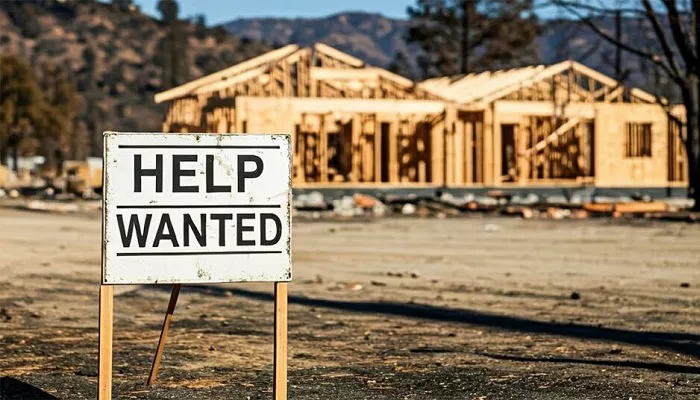The U.S. construction industry is facing significant financial losses and delays due to ongoing labor shortages, intensifying the nation’s affordable housing crisis, according to a new study released this week.
Conducted by the University of Denver in partnership with the Home Builders Institute (HBI) and the National Association of Home Builders (NAHB), the research reveals that the shortage of skilled workers adds an estimated $10.8 billion in annual costs due to extended construction timelines.
The study estimates that about 19,000 fewer single-family homes were built in 2024 as a result of the labor gap. Projects that proceeded faced an average delay of nearly two months—1.98 months overall, with smaller builders experiencing an average delay of 2.36 months.
“This study underscores the urgent need for strategic interventions to address the skilled labor shortage,” said NAHB Chief Economist Robert Dietz. “The economic implications are vast, affecting not only the home building industry but also the broader economy.”
The construction sector’s labor challenges stem partly from the lasting impacts of the COVID-19 pandemic, which saw nearly one million construction jobs lost in April 2020 alone, according to Statista data. Many of those workers have yet to return to the industry.
However, the report also highlights the critical role immigrant labor plays in construction and points to recent restrictive immigration policies as a factor exacerbating labor shortages and project delays.
An NPR report aired Wednesday spotlighted the Trump administration’s immigration crackdown and mass deportations, which threaten to deepen the labor shortage. George Carrillo, CEO of the Hispanic Construction Council, told NPR that between 700,000 and 1 million construction workers in the U.S. are undocumented.
“What people really need to understand is, we have a workforce shortage in this country, period,” Carrillo said. “Now, if you take out about a million Hispanics that are undocumented, it would devastate the construction industry.”
In response to these challenges, the study notes that construction firms are investing in workforce development and training programs aimed at converting unskilled laborers into skilled professionals. The industry is also increasing its use of technology and automation, while exploring alternative building methods such as modular construction.
Both the HBI, a nonprofit dedicated to trade skills training, and the NAHB, one of the largest trade associations for home builders, offer programs designed to close the skilled labor gap.
“The Home Builders Institute is proud to be part of the solution to the nation’s skilled labor shortage,” said Ed Brady, HBI president and CEO. “Through hands-on training programs and industry-recognized certifications, HBI is equipping the next generation of construction professionals with the skills needed to meet growing demand.”
As the construction industry adapts to these workforce challenges, addressing labor shortages and immigration policy impacts remains critical to alleviating America’s housing crisis.
Related topics:
- How to Get UK Citizenship: 6 Proven Paths
- How Long After Priority Date Becomes Current: A Complete Guide
- Where to File Adjustment of Status: Complete Guide for Applicants


